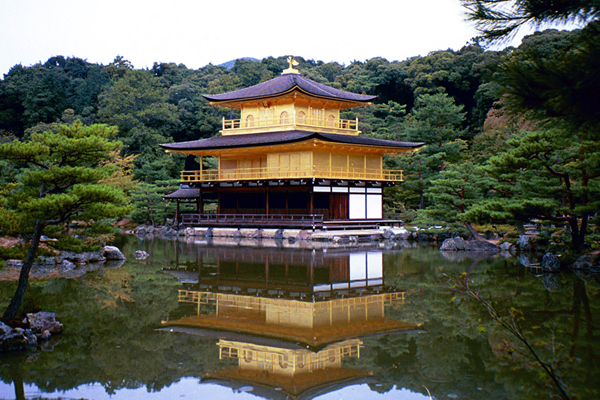
Golden Pavilion
Kinkaku-ji
Kyoto, Japan

|
Golden PavilionKinkaku-ji
|
Arguably one of the more beautiful buildings in the world, the Golden Pavilion (1397) was the retirement villa of Yoshimitsu, the third Ashikaga shogun. His original complex contained many buildings, but over the centuries only the Golden Pavilion survived, until it was burned to the ground by a deranged monk in 1950 (as fictionalized in Yukio Mishima's novel The Temple of the Golden Pavilion, 1956). The present building dates from 1955, but faithfully reproduces the original.
In Yoshimitsu's concept, the site was to serve as a pleasure estate during his retirement, and as a temple after his death. He therefore laid out the buildings and grounds as an earthly representation of the Buddhist paradise that he expected to enjoy in the afterlife. Thus, after Yoshimitsu's death, the estate became a temple deeded to the Rinzai Zen sect. Because of this, the site is known either as Rokuon-ji (Deer Park Temple), or more popularly as Kinkaku-ji, the Temple (ji) of the Golden Pavilion.
The idea of retiring to a villa-paradise-temple, which could involve taking religious orders and burial on the same estate, was not unique to Yoshimitsu – the Phoenix Hall of the Byodo-in is another example. During this period, the aristocracy conceived of life as a series of stages on the road to heaven. Retirement became a smooth transition between life and after-life, and was lived in beautiful surroundings that previewed the heavenly paradise to come.

|

|